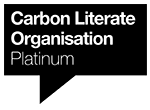Ofgem Default Tariff Price Cap
On the 1st January 2019, the Ofgem Default Tariff Price Cap came into effect.
The cap is in response to the Government’s Domestic Gas and Electricity (Tariff Cap) Act which became law in July 2018 and gave Ofgem a duty and the power to implement a temporary cap on fixed-term default tariffs. Ofgem has implemented an energy price cap of £1,137 a year, which is estimated to save 11 million UK households on default deals an average of £75 per year.
The aim of the cap is to force energy companies to scrap excess charges for people on poor value default deals and protect consumers. The exact savings for each individual household will vary depending on factors such as the price of their current deal, the amount of energy they use, the way they pay for their energy and whether they pay for both gas and electric.
In September 2018 APSE Energy sent a briefing note to members which outlines the main points of Ofgem’s proposal and the opportunities this poses for the role of local government in the energy agenda. Details of how APSE Energy members can access the briefing can be found here.
Reactions across the industry to the default tariff cap coming into effect have been mixed.
British Gas owner Centrica is seeking a judicial review against Ofgem over how the regulator calculated wholesale costs when setting the level of the cap, as it does not believe it was calculated fairly. Ofgem has responded by defending its proposals robustly and confirming that an extensive consultation process was carried out when setting the price of the cap, which they believe offers consumers on poor value tariffs a fairer deal. Ofgem also plans to take into account rising wholesale costs by updating the level of the cap every 6 months.
Concerns have also been raised that the cap will reduce competition in the market. Research from Which? has revealed that there are now only 8 energy tariffs on the market that cost less than £1,000 a year, compared to 77 in January 2018 - a 90% fall in a year ahead of the introduction of the cap. Which? has said that this analysis lends weight to concerns that “energy suppliers may reduce the number of cheapest deals on the market to make up for money they might lose on their more expensive default tariffs.”
While there may be a reduction in the number of super cheap deals on the market, consumers will still be able to save extra on their energy bills by switching to cheaper tariffs below the cap, which should continue to foster competition in the market. The Energy Switch Guarantee allows consumers to switch with confidence.
Although we expect the introduction of the price cap to have an impact there remains a clear role for local authorities to continue to promote switching to the most appropriate tariffs. ‘Cheap’ tariffs are good of course but so are ‘green’ and so are those supplied by companies who will be around for the long term. Civic suppliers such as Robin Hood Energy and Bristol Energy, Fairer Power and white labels such as CitiZen Energy, Ram Energy, Great Northern Energy, White Rose, LECCY and Angelic Energy provide evidence that local authorities can be a substantial one.
We contacted Robin Hood Energy, the not-for-profit energy company owned by Nottingham City Council, for their view on the cap. Gail Scholes, CEO of Robin Hood Energy, said: “For years Robin Hood Energy have actively encouraged customers off these higher prices. As a not-for-profit energy company set up to tackle fuel poverty and give people a cheaper alternative to the traditional Big 6, we’re generally supportive of the Energy Price Cap so long as it is regularly reviewed in line with wholesale cost movements.”
When viewing the impact of the price cap at a locality level, APSE Energy sees the overall reduction in energy bills and increased consumer protection as a positive intervention in the market by Ofgem which will benefit many households in fuel poverty.
It will be interesting to see the long-term impact of the cap, as well as the way in which the market will respond when the cap is eventually removed.

.png)



.png)